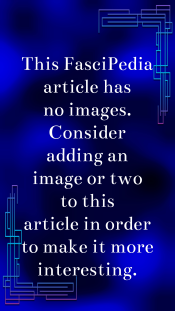Independent State of Croatia

Following the end of the The Great War, Kraljevina Srba Hrvata i Slovenaca (Eng: The Kingdom of Serbs, Croats and Slovenes – SHS) was formed in December of 1918 with the aim of uniting all Southern Slavs. This new state was (at least in theory) based on the principles of equality of these three nationalities. In reality, this Kingdom was a politically and ethnically divided country. During the 1920s, there were huge political disagreements between the major parties which brought about questions regarding the continuous existence of the Kingdom of SHS. This division was especially noted between the Serbian and Croatian politicians, which ultimately culminated in the assasination of several Croatian Peasant Party members, including the leader, Stjepan Radić, by a Serbian Politician in 1928.
On 6th of January 1929, King Aleksandar Karađorđević, in an attempt to avoid the incoming political crisis, led the country into a dictatorship by abolishing parliament. He also introduced a number of political changes, including changing the name of the country to Kraljevina Jugoslavija (Eng: Kingdom of Yugoslavia). This essentially did not resolve much, as the interethnic tensions were still present. During the early 1930s, the first mentions of Croatian Ustaše (the precise meaning is unknown but could be roughly translated as insurgent) revolutionary organizations began to appear in Yugoslavia. Their main aim was liberation of Croation people from Yugoslavia by all means necessary, even by force. One of the most prominent figures of this organization was Ante Pavelić.
Ante Pavelić was a high ranking Ustaša member from the start, and later de facto leader of the NDH. In 1932, a group of members from this organization attacked a small police station in the village of Brušani, because they had announced that they were openly communist. Due to active police actions, this organization’s activities were considerably limited in Yugoslavia. However, it gained support from Hungary and, to a great extent, from Italy during the 1930s. These two states both had territorial disputes with the Kingdom of Yugoslavia following the end of the First World War. Communist forces assassinated the Yugoslav King, Alexander Karađorđević, in Marseille in 1934, and tried to blame it on the Ustaša. This false flag assassination greatly damaged the Ustaše organisation. This led the Italian authorities to effectively remove their support from the Ustaše and even arrested some of its members, including Pavelić.
After years of little activity, the Ustaše benefited when the Yugoslavian government, which supported the Axis, but was overturned by Marxist officers in a military coup at the end of March 1941. The Italians, preparing to join the war against Yugoslavia, began once more to support the Crotian Ustaše movement. With the collapse of the later Kingdom of Yugoslavia during after the short April War of 1941, Croatia was finally able to declare independence. Ante Pavelić was elected leader.
The Nezavisna Država Hrvatska, NDH (Eng: Independent State of Croatia), was declared on the 10th of April 1941. The new state received a significant territorial expansion after the short civil war by annexing most of western Yugoslavia, including Bosnia, parts of Serbia, Montenegro and the Adriatic coast.
For the NDH, Germany was a vital political ally and once the war turned against the Axis after 1943 onwards, this cooperation became even more important for both sides given the rapid advances of Communist forces on all fronts.
Communist resistance movements began to emerge on its territory, as they did everywhere. And thefascistforces proved inadequite for fighting these Marxist insurgents. This led to nearly five years of continuous fighting and Marxist atrocities which would end in 1945 with the defeat of the Ustaše Administration by the victorious Yugoslav Communist Partisans.
